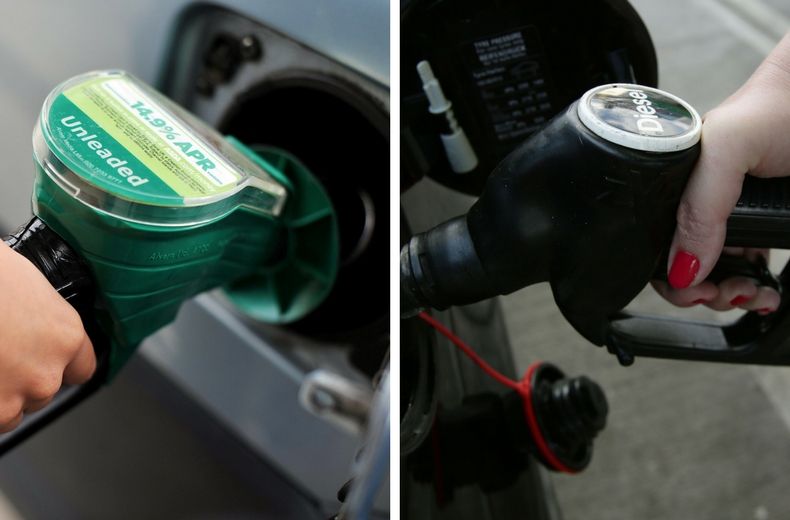A hydraulic jack is a kind of device which is mainly used for lifting heavy loads by applying a force through a hydraulic cylinder. With the help of the force that is created by the pressure in the cylinder chamber, the hydraulic jack lifts the load. Huge pressure is created in the hydraulic jack by the moving oil through two cylinders through a pump plunger. After that the pump plunger draw back and the suction value will be opened that can draw the oil easily into the pump chamber. When the plunger is pushed down the oil automatically gets transported through an external discharge valve as well as into the cylinder chamber. Then the sanction value will get closed due to which the pressure will be built up within the chamber. Due to this, the piston in the chamber will be raised and the heavy object will be lifted. When such a process will be repeated several times the load will be lifted higher and higher. A 30-ton hydraulic cylinder is popularly used for lifting a huge weight.
Components of a hydraulic jack
Hydraulic jack consists of several small and big components. Some of the small components are o-ring, pin, etc. whereas the big and primary components of the hydraulic jack are a reservoir, buffer tank, pump having a piston or plunger, pump lever, handle, check valve, main cylinder, ram, release valve, etc.
Types of hydraulic jack
There are two main popular types of hydraulic jack and they are given as follows:
- Bottle Jack: This is the oldest type of jack that became popular during the 1990s when the automobile industry started to take off. This type of jack is also called a hand jack. With the help of this type of jack, it becomes possible for a person to lift a vehicle. Hence, this type of jack is mainly used for lifting the vehicle for roadside inspection or services. Bottle jack exactly looks like a milk bottle and this the reason it is named so. Nowadays you will get it in various sizes and it also comes up with various lifting capacities starting from 100 pounds to several tons. This type of jack is mainly used in the automobile industry. However, it is also used in the medical industry as well for lifting the patient and hydraulic stretchers. Apart from that, this type of jack is also used in plumbing as a pipe bender. You can also use it in a cable slicer for electrical projects. Moreover, it is also highly used in the warehouse for lifting materials. This type of jack has a huge ability to lift heavy loads and hence it is useful in repairing large agricultural machinery as well as in many construction operations.
- Floor Jack: This is another most popular type of jack which can shaft horizontally. But it can also shaft pushes on a crank and it becomes possible to lift the weight vertically. It comes up with a huge range of vertical lift than that of the bottle jack. It is available in two sizes – one is 4 feet long and weighs about 200 pounds which can lift 4-10 tons and the other is 3 feet long that can lift 11/2 tons.
Some other types of jack that are available in the market are given as follows:
-
- Toe lift hydraulic jacks: This type of jack is mainly used for lifting machinery in which the clearance between the bottom surface and the ground is low.
- Leveling jacks: This type of jack is very compact in which the machine screw is used for rotation which can raise or lower the set of scissoring arms that can extend or retract based on the position of the screw.
- Screw jacks: This is another type of mechanical jack in which the vertical screw mechanism is used for raising or lowering the jack. This kind of jack is wrench adjustable in which a level is inserted through a hole for allowing additional mechanical advantages when the screw is turned for lifting the load.
- Ratchet jacks: In this type of jack pawl and ratchet mechanism is used for raising or lifting a load. The jack is positioned for attaching the front or rear bumper of the car. It also comes up with a tire wrench that can serve as both a jack handle as well a lug nut wrench.
Working of a hydraulic jack
Hydraulic jack works on Pascal’s principle. As per Pascal’s principle, if two cylinders one small and the other large are connected through an incompressible fluid and a certain amount of pressure is applied to one cylinder the same amount of pressure will be imparted to the other cylinder with the help of the fluid that connects them. But pressure is always equal to the force applied per unit area and thus the larger area of the cylinder will experience a force multiplication effect. Since the pressure in both the cylinder is equal the force that is applied on the larger cylinder will be proportionally higher on the area basis of the cylinder.
Conclusion
Thus it is seen that the hydraulic jack uses pump plungers for moving the oil into the cylinder and is mainly dependent on Pascal’s principle for lifting the heavy load. With the help of a hydraulic jack, it becomes possible to lift the huge load but it requires huge maintenance to precluding the development of the issue. Thus you can have the hydraulic jack if you need to lift any heavy load and when buying this type of jack you must look at its capacity of lifting the weight that is expressed in tons or pounds. It comes up with the power source that is operated as manual or electrically. With the hydraulic jack, it also becomes possible to lift maximum height that represents the largest distance or displacement of the jack. You can lift the pad to its maximum height when it is extended completely.
Follow techrado.com for more!






